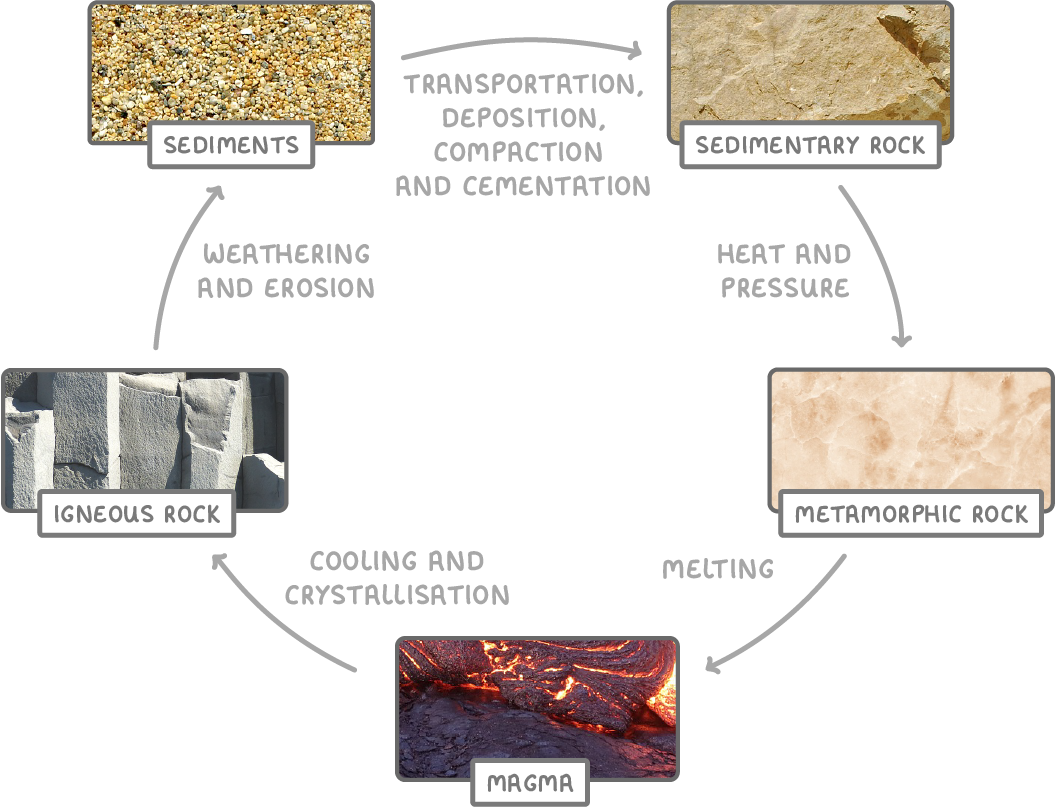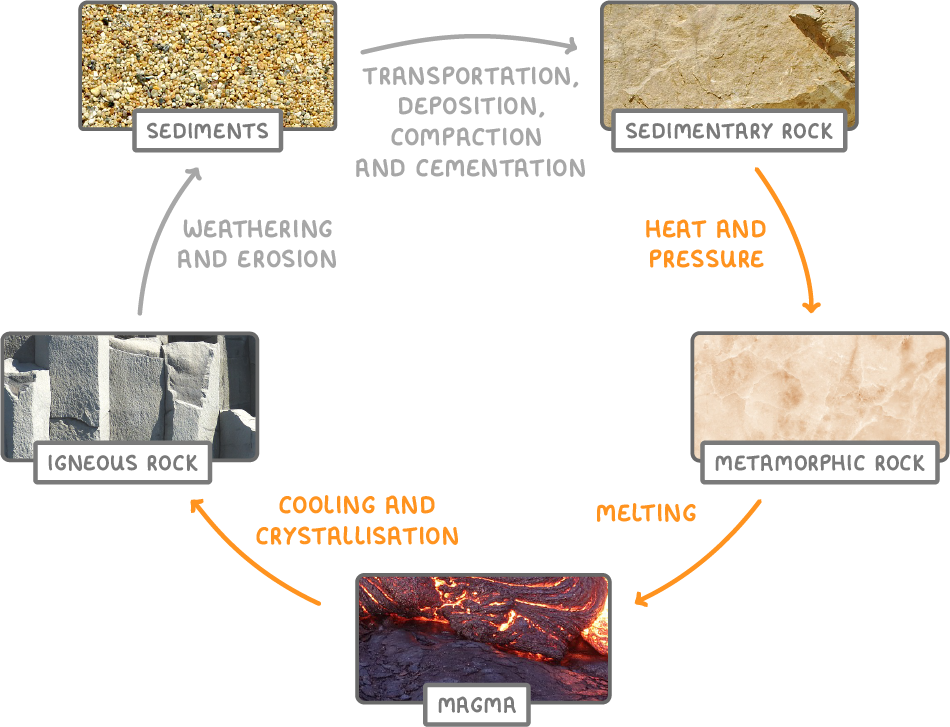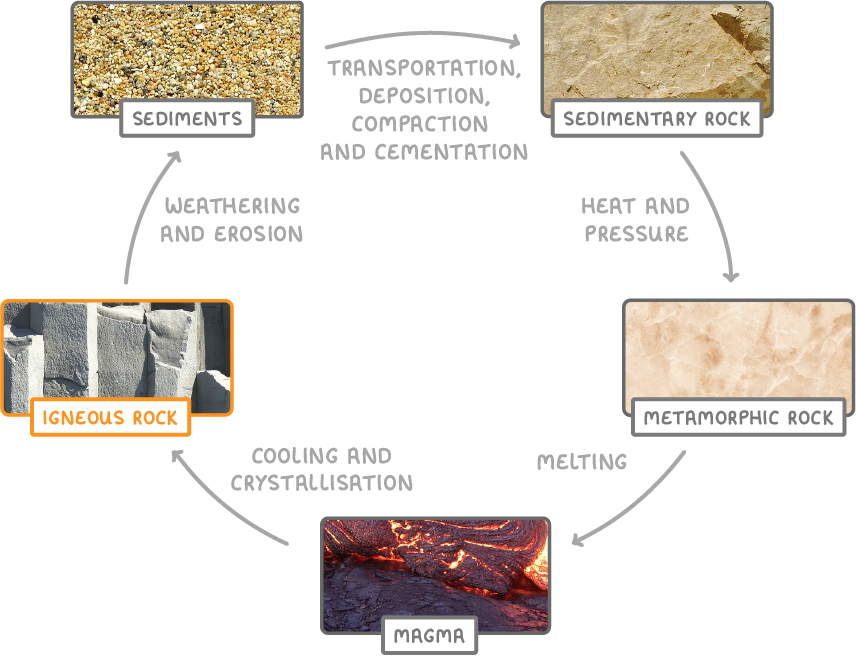The rock cycle
This lesson covers:
- The three main types of rock - igneous, sedimentary, and metamorphic
- The processes involved in the rock cycle
Introduction to the rock cycle
The rock cycle is the long process whereby rocks of one kind change into rocks of another kind.

There are three main types of rock:
- Igneous rock - forms from the cooling and solidification of molten magma or lava.
- Sedimentary rock - forms from the accumulation and compression of sediments.
- Metamorphic rock - forms when existing rock is changed by heat and pressure.
Over millions of years, rocks are transformed from one kind to another in the rock cycle.
Key processes in the rock cycle - Weathering and erosion

- Weathering is breaking down of rock material. There are two types you need to know about:
- Freeze-thaw weathering - Water freezes and thaws inside rock cracks, widening cracks.
- Onion-skin weathering - Heating and cooling of rock surface causes the outer layers expand and contract, splitting and peeling off like onion skin.
- Erosion is the wearing away and removal of rock material.
Key processes in the rock cycle - Transportation, deposition, compaction and cementation

- Transportation is the movement of eroded material by wind, water, and ice.
- Deposition is the settling of transported sediment.
- Compaction and cementation forms sedimentary rock.
Key processes in the rock cycle - Heating, cooling, and crystallisation

- Heat and pressure turns sedimentary into metamorphic rock.
- Heating melts metamorphic rock to form magma.
- Magma cooling and crystallising forms igneous rock.
Key processes in the rock cycle - The cycle starts again

- Exposure - igneous rock returns to surface and weathering restarts the cycle.
- These processes taking place over long time periods and drive the transitions between different rock types.